Archives
- By thread 5224
-
By date
- June 2021 10
- July 2021 6
- August 2021 20
- September 2021 21
- October 2021 48
- November 2021 40
- December 2021 23
- January 2022 46
- February 2022 80
- March 2022 109
- April 2022 100
- May 2022 97
- June 2022 105
- July 2022 82
- August 2022 95
- September 2022 103
- October 2022 117
- November 2022 115
- December 2022 102
- January 2023 88
- February 2023 90
- March 2023 116
- April 2023 97
- May 2023 159
- June 2023 145
- July 2023 120
- August 2023 90
- September 2023 102
- October 2023 106
- November 2023 100
- December 2023 74
- January 2024 75
- February 2024 75
- March 2024 78
- April 2024 74
- May 2024 108
- June 2024 98
- July 2024 116
- August 2024 134
- September 2024 130
- October 2024 141
- November 2024 171
- December 2024 115
- January 2025 216
- February 2025 140
- March 2025 220
- April 2025 233
- May 2025 239
- June 2025 303
- July 2025 36
-
Let’s talk about reclaiming mental health in Asian communities
the Daily read
Remove the stigma .
Share this email 



AN ARTICLE A DAY, PICKED BY OUR EDITORS 
Talking about mental health isn’t easy, especially for those in Asian communities where opening up about such issues can sometimes be stigmatized. That is why it is so important to destigmatize mental-health conversations and promote self-advocacy among the Asian diaspora, according to clinical psychologist Dr. Jenny Wang. Tune into a new Author Talks interview and hear what Dr. Wang has to say about the rise in anti-Asian sentiment during the pandemic, cultural experiences with racism, intergenerational trauma, and why she created the Instagram account @asiansformentalhealth. You don’t want to miss it. — Katherine Tam, digital editor, New York 
Author Talks: We need to talk about Asian American mental health Dr. Jenny Wang created the Instagram account @asiansformentalhealth in fall 2019. As the pandemic—and anti-Asian hate—spread, it became a haven for Asian Americans seeking mental-health resources. Remove the stigma 

Quote of the Day “Fundamentally, you need to play defense on risk and offense on growth. That means figuring out how your climate strategy ties into the value creation story.” —McKinsey senior partner Laura Corb on the SEC’s proposed climate risk disclosure rule in a recent episode of the Inside the Strategy Room podcast 
Chart of the Day 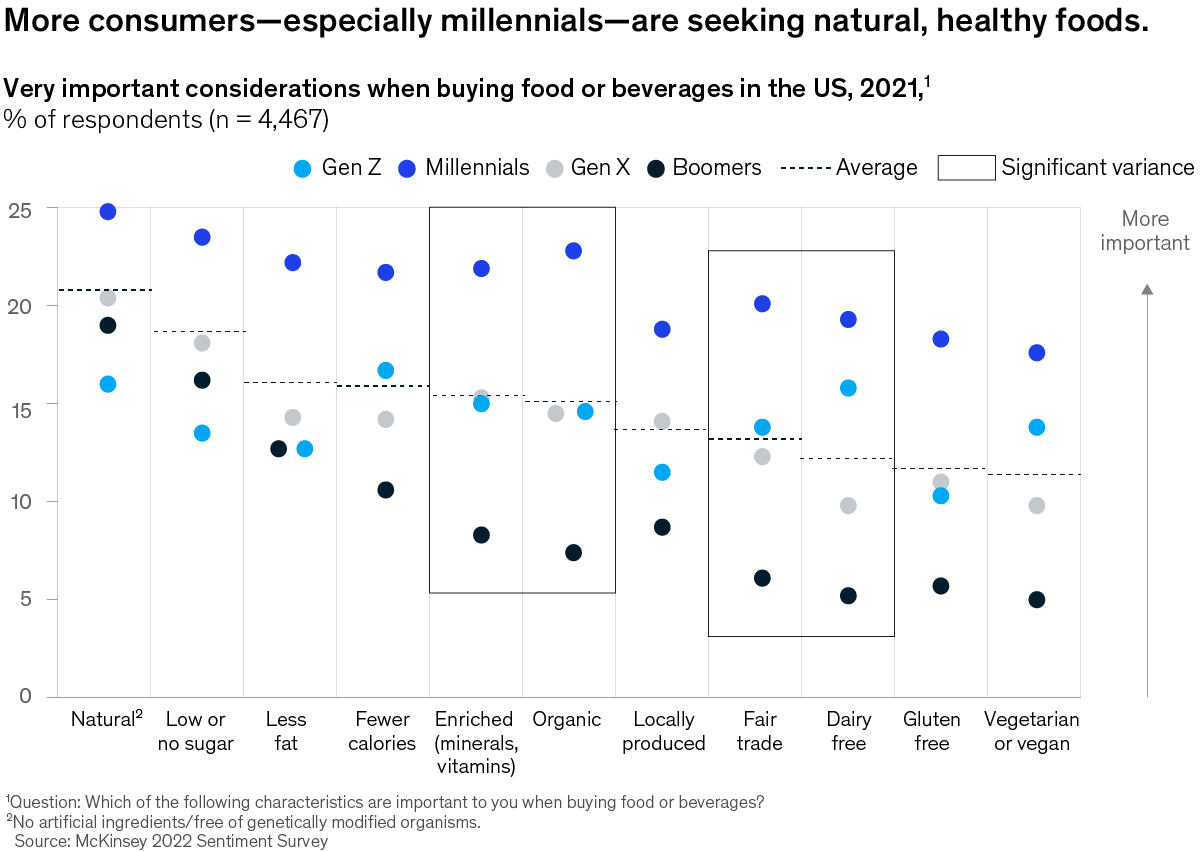
See today’s chart 
Also New 

Governors-elect have transition teams. What about their cabinets? Unlike newly elected governors, top appointees and officials typically start their jobs without the backing of a transition team. Still, with a strategic approach, they can hit the ground running. Consider 5 steps 


Finding hidden value with order-to-cash optimization Too often, organizations lose significant value in order-to-cash and inside-sales operations. A deeper understanding of process break points can unlock significant hidden opportunity. Examine deeply 


How digital helps a life sciences leader move at light speed Pfizer’s Chief Digital and Technology Officer explains how digital is transforming her organization’s ability to bring new medicines to patients at speed and at scale. Understand new innovations 


Follow our thinking 



Share these insights Did you enjoy this newsletter? Forward it to colleagues and friends so they can subscribe too.
Was this issue forwarded to you? Sign up for it and sample our 40+ other free email subscriptions here.This email contains information about McKinsey’s research, insights, services, or events. By opening our emails or clicking on links, you agree to our use of cookies and web tracking technology. For more information on how we use and protect your information, please review our privacy policy. You received this email because you subscribed to the Daily Read newsletter. Manage subscriptions | Unsubscribe Copyright © 2022 | McKinsey & Company, 3 World Trade Center, 175 Greenwich Street, New York, NY 10007
by "McKinsey Daily Read" <publishing@email.mckinsey.com> - 06:35 - 9 Jun 2022 -
Sangoma Webinar: Sangoma’s new P- Series phone range for all your PBX & UC solutions
Sangoma Webinar: Sangoma’s new P- Series phone range for all your PBX & UC solutions
Sangoma invites you for an exclusive webinar to introduce Sangoma’s P-Series phone range; offering from value-based to a full touch screen executive model. The Power You Need, The Price You Want!
Introducing Sangoma’s P-Series phone range; offering from value-based to a full touch screen executive model.
About the webinar
Sangoma’s exclusive line of desk phones delivers intuitive functionality and productivity features, for every user type, at a competitive price.
All models include high-definition audio, unprecedented plug-and-play deployment, and advanced built-in applications that include voicemail, call log, contacts, phone status, user presence, parking, and more.Join us for the webinar to gain access to exclusive launch deals and the chance to win your own P Phone.
 [ Image ]
[ Image ]About the Speaker
Aveek Roy
Regional Director
APAC/MEA
For any query please write to APAC Marketing
 [ Image ]
[ Image ]Sangoma Technologies
1st Floor, Building No 6, Madangir , New Delhi 110062 , India | +91 11 4107 1214
This email was sent to info@learn.odoo.com. If you no longer wish to receive these emails you may unsubscribe at any time.
by "Sangoma Technologies" <webannounce@sangoma.com> - 05:46 - 9 Jun 2022 -
Patient demand for telehealth is clear. Why aren’t physicians so sure?
McKinsey&Company
Three emerging telehealth trends .

Telehealth’s next chapter In the news • Ten thousand apps. Finding a therapist is tough these days, so it’s not surprising that many are turning to mental-health apps to help with everything from anxiety to insomnia. However, choosing the right one may be tricky. More than 10,000 mental-health apps were on the market as of 2017, according to one estimate. Experts recommend looking for programs that teach skills (for example, belly breathing). They also say to find out how the app stores and shares data, and to make sure you’re comfortable with what type of info is collected. [NYT] • Tapping into telehealth. Done well, telehealth can boost patient health, trim costs, and make it easier for those who live in areas with too few health providers to gain access to care. Through digital platforms, telemedicine can enable patients to connect to the best doctors even if they practice hundreds of miles away. Virtual healthcare can also prevent avoidable ER trips. One 2019 study found that ER services for nonemergency, treatable conditions can cost 12 times more than visiting a doctor’s office, a difference of $32 billion each year. [HBR] 
As the pandemic evolves, consumers still prefer the convenience of digital engagement and virtual-care options, according to McKinsey’s recent survey. 
On McKinsey.com • Divided on digital health. Doctors and patients aren’t on the same page about telehealth. Although 60% of patients agree that virtual health is more convenient for them than in-person care, only 36% of doctors say the same, reveals 2020 and 2021 McKinsey surveys of physicians and consumers. Physician belief in telehealth’s effectiveness has declined since July 2020. More doctors are also recommending in-person care when possible to their patients, even when they offer telehealth. This may suggest physicians are rethinking virtual care. • Three trends. Meanwhile, patients remain keen on virtual care. Those under the age of 55, in higher income brackets, and with individual or employer-sponsored group insurance are more likely to use telehealth, reveals a March 2021 McKinsey Consumer Survey. Demand for virtual care in mental and behavioral health is also higher than in other specialties, with 62% of mental-health patients completing their most recent visit virtually versus 20% of patients doing so for a primary-care provider. See three trends in telehealth that could color the next few years. — Edited by Belinda Yu Uncover telehealth trends 
Was this forwarded to you? Sign up here. Or send us feedback — we’d love to hear from you. 

Follow our thinking 


This email contains information about McKinsey’s research, insights, services, or events. By opening our emails or clicking on links, you agree to our use of cookies and web tracking technology. For more information on how we use and protect your information, please review our privacy policy. You received this email because you subscribed to the On Point newsletter. Manage subscriptions | Unsubscribe Copyright © 2022 | McKinsey & Company, 3 World Trade Center, 175 Greenwich Street, New York, NY 10007
by "McKinsey On Point" <publishing@email.mckinsey.com> - 12:43 - 9 Jun 2022 -
Building resilience amid crises and disruption
the Daily read
Withstand shocks .
Share this email 



AN ARTICLE A DAY, PICKED BY OUR EDITORS 
As a global community, we are living through continuous, overlapping crises with long-lasting effects. Yesterday’s risk management practices may not be fit for the future. But public- and private-sector organizations that build resilience could find they’re better able to withstand shocks and bounce back better, while driving sustainable, inclusive growth. A can’t-miss white paper from the World Economic Forum and McKinsey explores how to approach the issue across regions, economies, and industries. Available as a free download, it covers lessons from past crises, analyzes the impact of resilience on growth, and defines a common resilience framework, plus seven themes—including climate and healthcare—shaping the future. Give it a read and get resilient. — Joyce Yoo, digital editor, New York 
Resilience for sustainable, inclusive growth Resilience should be seen as the ability to deal with adversity, withstand shocks, and continuously adapt and accelerate as disruptions and crises arise over time. Withstand shocks 

Quote of the Day —McKinsey partner Abdur-Rahim Syed on Pakistan’s emerging start-up ecosystem in a recent episode of the McKinsey on Start-ups podcast 
Chart of the Day 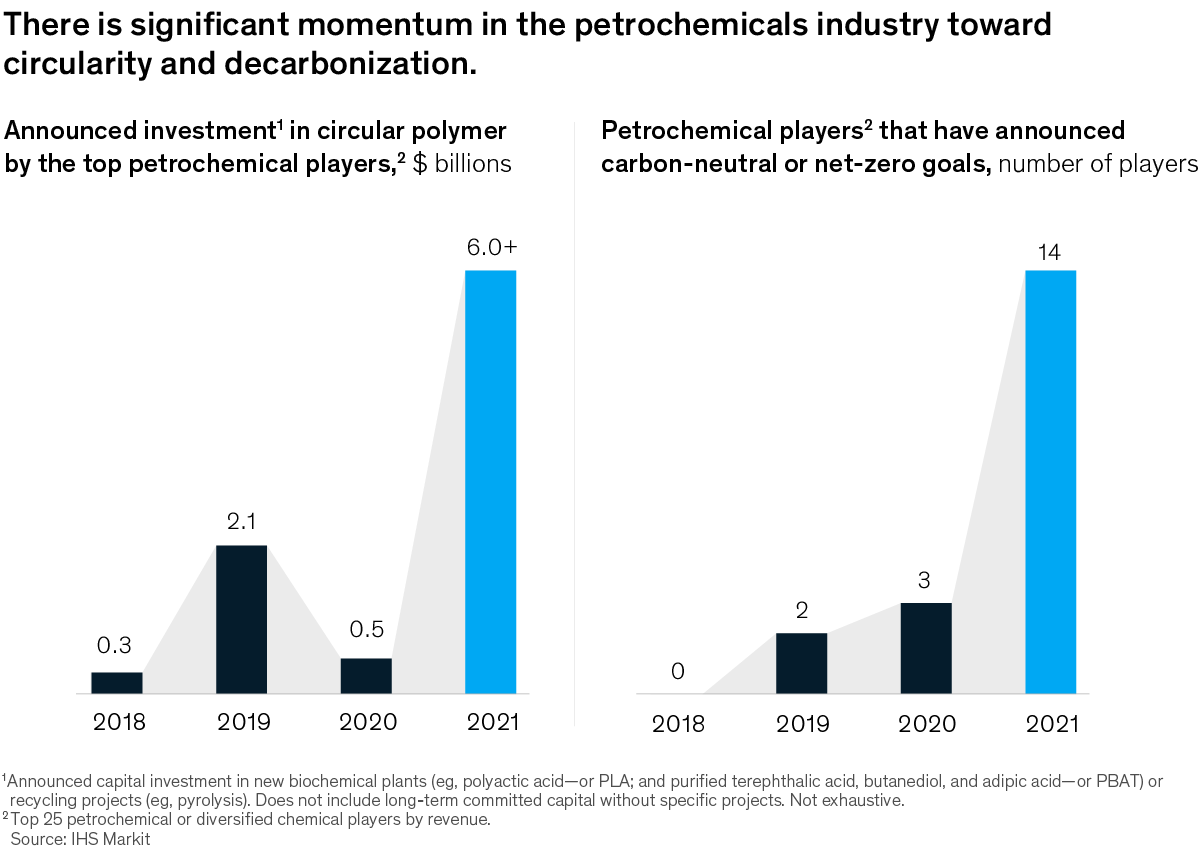
See today’s chart 
Also New 

Author Talks: A new way to think about management Predicting the future is impossible, but traditional business models try anyway. Roger Martin says management leaders need to revisit the whiteboard. Get back to basics 


US polyethylene price evolution and what to expect Prices for petrochemicals in the United States have increased significantly, even beyond what fundamentals would dictate. Get the scoop 


Understanding the SEC’s proposed climate risk disclosure rule A new rule proposed by the SEC would require companies to significantly increase their reporting on climate risk. We look at the implications for senior executives. Read deliberately 


Follow our thinking 



Share these insights Did you enjoy this newsletter? Forward it to colleagues and friends so they can subscribe too.
Was this issue forwarded to you? Sign up for it and sample our 40+ other free email subscriptions here.This email contains information about McKinsey’s research, insights, services, or events. By opening our emails or clicking on links, you agree to our use of cookies and web tracking technology. For more information on how we use and protect your information, please review our privacy policy. You received this email because you subscribed to the Daily Read newsletter. Manage subscriptions | Unsubscribe Copyright © 2022 | McKinsey & Company, 3 World Trade Center, 175 Greenwich Street, New York, NY 10007
by "McKinsey Daily Read" <publishing@email.mckinsey.com> - 06:14 - 8 Jun 2022 -
[Webinar] Build a foundation for integration success
Tray Email
join us on June 22nd at 12pm PT/ 3 pm ET!Hi Md,
How are you preparing your IT ecosystem for the future? Nucleus Research states that "integration platforms have become essential for their ability to manage data flows, ensure data quality, and support ever-changing software ecosystems by uniting disparate systems and applications."
Join us June 22 at 12pm PT / 3pm ET and learn " How to build a technology foundation for integration success".
Nucleus Research and Tray.io will cover:
- Where integration + automation technology (iPaaS) is headed
- 2 key value-drivers of integration automation
- How to maximize the ROI of your automation initiative
- What modern low-code automation looks like live
 Kayla Gibbons
Kayla Gibbons
MARKETING
© Tray.io Inc. 25 Stillman Street, San Francisco, CA 94107, United States
by "Kayla Gibbons, Tray.io" <kayla@tray.io> - 11:16 - 8 Jun 2022 - Where integration + automation technology (iPaaS) is headed
-
You're' invited 🎙 Webinar: Remote for refugees
You're' invited 🎙 Webinar: Remote for refugees
Register today for our online discussion on Remote for refugees.Hi MD,
You are invited to join Remote's VP of Special Operations, Filipa Matos, Senior Product Marketing Manager, Peter Maher, and Lorraine Charles, the Co-Founder and Executive Director of Na'amal, for our next webinar.
🎙 Webinar: Remote for refugeesDate: 20th June
Times: 8:00 AM UTC | 9:00 AM BST | 10:00 AM CET
What will you learn?
- Practical insights to help employers and hiring managers find forcibly displaced talent
- Benefits of hiring forcibly displaced talent for the employee and the employer
- Practical guidance on how to overcome challenges when hiring refugee talent
- The state of refugee work rights around the world and the advocacy movement for right-to-remote-work
- Announcement about a new platform to help employers find vetted refugee talent
Speakers:
-
Filipa Matos: VP of Special Operations at Remote
-
Lorraine Charles: Co-founder & Executive Director at Na'amal
- Peter Maher: Senior Special Operations Manager at Remote
Grow your headcount
without the headaches.
You received this email because you are subscribed to News & Offers from Remote Technology, Inc.
Update your email preferences to choose the types of emails you receive.
Unsubscribe from all future emailsRemote Technology, Inc.
Copyright © 2022 Remote Technology, Inc. All rights reserved.
18 Bartol St. #1163 San Francisco California
by "Remote" <hello@remote-comms.com> - 10:02 - 8 Jun 2022 -
Don't Miss Out On This Live Webinar On How are AI dashcams transforming transport management systems?
Don't Miss Out On This Live Webinar On How are AI dashcams transforming transport management systems?

Live Webinar - Register for Free!!!

We are happy to announce that we’ve collaborated with Howen Technologies for another exciting webinar. On 16th June 2022, expert speakers from Uffizio and Howen Technologies will talk about the role of AI dashcams in the transport industry.
Tune in with us and learn more about how AI dashcams are changing the face of transport management systems. See how artificial intelligence is affecting fleet management operations.
If you’re in the business of fleet management or simply exploring advanced fleet management solutions—this webinar is for you.June 202216Thursday15:00 IST (Indian Standard Time)Free Register 
 Agenda
Agenda
1. Company profilesSee what Uffizio and Howen Technologies have to offer you.
2. Why does the transport industry need AI dashcams?Let's speculate why AI dashcams have become so important in the transport sector. The risk of accidents, the rising cost of vehicle repairs, and pricey insurance premiums are just a few reasons to get you started.
3. How are modern dashcams changing the face of fleet management systems?ADAS and DMS have raised the standards of safety. They have changed the way drivers get assessed and monitored. We’ll discuss how AI dashcams can enhance video telematics—in a way that benefits all involved parties.
4. Howen reveals their new Smart AI dashcams!
What makes Howen’s new dashcams so smart? Let’s find out together!
5. How do these AI dashcams function on Uffizio’s fleet management software?You need a fleet management system to store, analyze, and understand the data generated by Howen’s AI dashcams. See how Uffizio’s platform can help you make the most out of your dashcams.
6. Question and AnswersOur speakers will take questions from the audience and answer them in this segment.
Register and Save your Free Seat Right Now! SpeakersKamini Baghel
Customer Success Executive,
Uffizio
Shamy Luo
Product Manager,
Howen Technology




Want to change how you receive these emails?
You can update your preferences or unsubscribe from this list.
by "Uffizio Technologies Pvt Ltd" <official@uffizio.in> - 08:29 - 8 Jun 2022 -
How is the war in Ukraine changing the world? See the effects in 12 charts.
McKinsey&Company
Ukraine’s sweeping economic impact .

Ripple effects In the news • The great shake-up. The war in Ukraine has set off a chain of reactions that is reshaping the whole world. Some countries, particularly in Africa and the Middle East, are experiencing huge price spikes in wheat, cooking oil, and other agricultural products. The exodus of 5.8 million Ukrainian refugees, shortages of natural gas and oil, and political and military realignments mean that life is changing in profound ways across the globe. [NPR] • Economic repercussions. The Ukraine invasion’s domino effect on the world economy is gradually becoming clear. The IMF and World Bank have both cut global growth forecasts, citing the war’s impact on the price of commodities traditionally supplied by the region. Central banks are attempting to tame inflation with aggressive interest rate hikes, which is rattling financial markets. The situation is also intensifying supply and demand imbalances and harming consumer sentiment. [CNBC] 
The war is aggravating financial-system risks such as inflation-led recession, a deflating bubble in China’s property sector, and gridlock in the payments system. 
On McKinsey.com • Facts and figures. In 12 charts, McKinsey examined the consequences of the war in Ukraine for society and the global economy. A few headline numbers: a key index of food prices could rise by as much as 45% this year, McKinsey analysis suggests. In 2021, Europe imported 36% of its gas from Russia; the continent could reduce this to 10% this year. About 80% of Western tech firms have exited Russia or are scaling back, while more than 60% from other parts of the world are staying put. • Twelve disruptions. The war’s effect on supply chains and on the future of globalization is multifaceted, dynamic, and will depend on its duration and intensity. McKinsey has put data behind our view on how several scenarios are likely to play out. “Just in time” supply chain management is giving way to “just in case” approaches. Global tech standards are now more likely to separate than to unify. Defense spending is on the rise. Explore 12 disruptions that are changing our world. — Edited by Katy McLaughlin See the big picture 
Was this forwarded to you? Sign up here. Or send us feedback — we’d love to hear from you. 

Follow our thinking 


This email contains information about McKinsey’s research, insights, services, or events. By opening our emails or clicking on links, you agree to our use of cookies and web tracking technology. For more information on how we use and protect your information, please review our privacy policy. You received this email because you subscribed to the On Point newsletter. Manage subscriptions | Unsubscribe Copyright © 2022 | McKinsey & Company, 3 World Trade Center, 175 Greenwich Street, New York, NY 10007
by "McKinsey On Point" <publishing@email.mckinsey.com> - 12:22 - 8 Jun 2022 -
Learn More About Software Quality Market Trends with IDC Research Director [Webinar Invite]
Join us to learn more with IDC Research Director Melinda-Carol BallouHey Abul!
On June 14th, we are hosting a webinar to explore key findings from the recent IDC MarketScape research on Automated Software Quality and Continuous Testing.
Join us for this informative panel discussion with guest speaker Melinda-Carol Ballou, IDC Research Director, and SmartBear Senior VP of Product Marketing Joanna Schloss.
Highlights include:- How shifting left approaches are pulling quality earlier into development to enhance relevance, and responsiveness, time, and expense
- How AI and smart analytics are shaping the future of testing through automation, self-healing, and autonomous testing.
- How to establish effective continuous testing and quality strategies that encompass new and evolving development approaches like cloud-native and no-code/low-code.
Hope to see you there,
Cynthia Gumbert
P.S. We will be sharing a recording of the live session after the event in case you cannot attend!

This email was sent to info@learn.odoo.com by SmartBear Software, 450 Artisan Way, Somerville, MA. 02145, 617.684.2600, www.smartbear.com. We hope you found this email of interest. However, we value your privacy. If you do not wish to receive future correspondence from us, please click here to manage mail preferences.
by "Cynthia Gumbert" <cynthia@smartbearmail.com> - 09:40 - 7 Jun 2022 -
The latest on inflation, world trade, and unemployment in China
the Daily read
Get updated .
Share this email 



AN ARTICLE A DAY, PICKED BY OUR EDITORS 
Inflation is everywhere and its effects are being felt all over the globe. The latest update on McKinsey’s Global Economics Intelligence explores rising food and energy prices, slow GDP growth and growing unemployment in China, a slowdown in world trade, an increase in interest rates, the World Economic Forum (WEF)’s meeting in Davos, and more. For a deeper dive on the key issues affecting the world economy, be sure to check out the full Global Summary Report and the Critical Trends and Risks. — Joyce Yoo, digital editor, New York 
Global Economics Intelligence executive summary, May 2022 Central banks move against inflation; US industry expands while China’s economy contracts amid COVID-19 measures; supply challenges persist. Get updated 

Quote of the Day “The healthcare industry is being rewired across the entire patient journey. . . . The intersection of healthcare with the digital sector is accelerating this transformation. The pandemic acted as a catalyst, making people more fluent in using digital technologies and more receptive to virtual engagement.” —Lidia Fonseca, Chief Digital and Technology Officer at Pfizer in “How digital helps a life sciences leader move at light speed” 
Chart of the Day 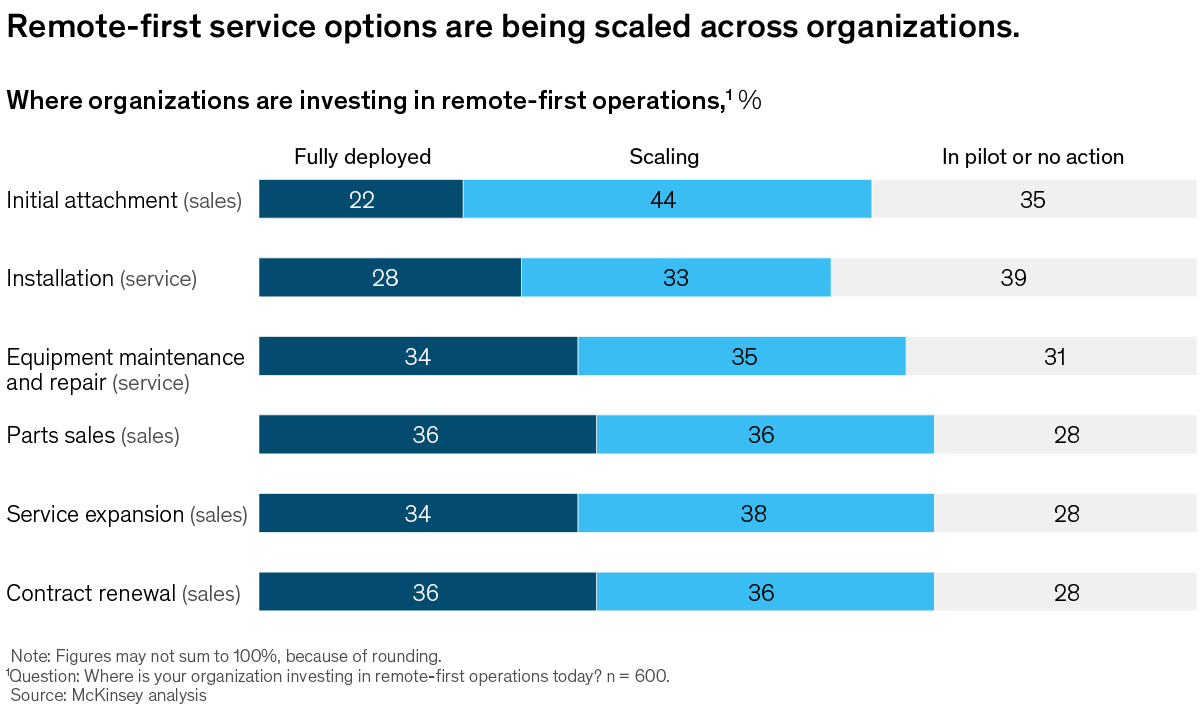
See today’s chart 
Also New 

Houston as the epicenter of a global clean-hydrogen hub Clean hydrogen is emerging as a viable way to reach net zero. In the United States, clean-hydrogen efforts in Houston, Texas, could serve as a template for other regions. Read the report 


Author Talks: Think digital People have long worried about being replaced by machines, but Tsedal Neeley says the true threat to job security in the digital age is other humans—namely those who know how to use digital tools. Improve your skill set 


Fear factor: Overcoming human barriers to innovation Worries about failure, criticism, and career impact hold back many people from embracing innovation. Here’s how to create a culture that accounts for the human side of innovation. Embrace new possibilities 


Follow our thinking 



Share these insights Did you enjoy this newsletter? Forward it to colleagues and friends so they can subscribe too.
Was this issue forwarded to you? Sign up for it and sample our 40+ other free email subscriptions here.This email contains information about McKinsey’s research, insights, services, or events. By opening our emails or clicking on links, you agree to our use of cookies and web tracking technology. For more information on how we use and protect your information, please review our privacy policy. You received this email because you subscribed to the Daily Read newsletter. Manage subscriptions | Unsubscribe Copyright © 2022 | McKinsey & Company, 3 World Trade Center, 175 Greenwich Street, New York, NY 10007
by "McKinsey Daily Read" <publishing@email.mckinsey.com> - 05:14 - 7 Jun 2022 -
MD, Today's 🎙 webinar starts in less than 1 hour.
MD, Today's 🎙 webinar starts in less than 1 hour.
Webinar: Improving Life-Work Balance for Your Remote WorkforceHi MD,
🎙 WEBINAR: Improving Life-Work Balance for Your Remote Workforce
Starts in less than 1 hour.
What will you learn?
- How to create team structures that facilitate healthy working hours
- Which benefits and programs can improve life-work balance
- How to build psychological safety within remote teams
- How to identify and prevent burnout before it happens
- Where asynchronous workflows can help
Speakers:
- Amanda Day - Director of People Enablement
- Preston Wickersham - Senior Content Marketing Manager
- Claire Walsh- People Enablement Partner
- Tarrah Nhari - CX Program Manager
Hire, onboard, and pay your international team in minutes and stay compliant.
You received this email because you are subscribed to News & Offers from Remote Technology, Inc.
Update your email preferences to choose the types of emails you receive.
Unsubscribe from all future emailsRemote Technology, Inc.
Copyright © 2022 Remote Technology, Inc. All rights reserved.
18 Bartol St. #1163 San Francisco California
by "Remote" <hello@remote-comms.com> - 10:32 - 7 Jun 2022 -
Level up your Kubernetes observability with New Relic
New Relic
Visually navigate your entire stack with New Relic Explorer.Level up your Kubernetes observability with New Relic
In this fun and interactive workshop you’ll get hands-on with a working Kubernetes environment, learn about managing and configuring integrations from sources like Prometheus and Fluent Bit, and troubleshoot a range of issues with the New Relic One platform.
You’ll instrument a cluster in just a few clicks with New Relic, and then using a virtual and interactive lab platform you’ll work with powerful kubectl commands to explore the cluster, work with labels, annotations and Helm settings to configure your environment, before working on troubleshooting challenges, and deploying alerts to get notified of future issues.Register Now What you will do during this workshop
- Use a guided install for Kubernetes to instrument your cluster
- Use kubectl commands to query and inspect specific Kubernetes resources
- Learn about Prometheus scrape labels and how to use them to enable Prometheus metric collection
- Learn about Helm values.yaml files and using them to make configuration changes
- Learn how to manage common configuration changes related to Fluent bit and log ingestion in Kubernetes
- Learn about some common issues that may arise in Kubernetes clusters and how to identify them in the New Relic One UI
- Use Terraform to automate the creation of the Kubernetes NRQL alerts above.
Register Now If you have questions along the way, check our docs, community, or take a hands-on lab.
Unsubscribe or change your preferences at any time.
For information about our privacy practices, see our Privacy Policy.
New Relic, Inc. 31-36 Golden Ln, Dublin 8, D08 A5RV, Ireland | +353 (01) 687 6808
View in browser
This email was sent to mberry@newrelic.com as a result of subscribing or providing consent to receive marketing communications from New Relic.
© 2021 New Relic, Inc. All rights reserved.
New Relic logo are trademarks of New Relic, Inc.
This email was sent to info@learn.odoo.com. If you no longer wish to receive these emails, click on the following link: Unsubscribe
by "New Relic" <emeamarketing@newrelic.com> - 04:37 - 7 Jun 2022 -
Dragging yourself out of bed? Eight questions can help address employee burnout.
McKinsey&Company
Findings from a new survey .

Battling burnout In the news • A sacred pause. For many entrepreneurs, extreme exhaustion is a familiar feeling, but burnout is also becoming commonplace for everyday workers. Still, making some changes can help. Besides finding a therapist, it’s important to learn what activities recharge you and set aside time for them. One CEO suggests creating “a very sacred pause” in the week, such as Friday night dinners, to help people relax and be present. When discussing burnout with your boss, explaining why your request is good for the company can convey confidence. [Bloomberg] • It’s complicated. In March 2022, around 4.5 million US workers quit their jobs. A growing number of unfilled roles can complicate life for the colleagues who stay. Half of US workers who responded to a 2021 survey said they had to accept more responsibilities after a former coworker left. With burned out workers resigning in search of better work–life balance, executives say companies need to figure out what to do now. Increasing flexibility in work schedules, supporting caregivers, and listening with empathy can help increase engagement and retention. [FT] 
Across the 15 countries in our survey, toxic workplace behavior is the single largest predictor of negative employee outcomes, including burnout symptoms. 
On McKinsey.com • A disconnect. Employers are responding to unprecedented levels of burnout by investing in a multitude of wellness programs. Across the globe, four in five HR leaders say that mental health and well-being is a top priority, a McKinsey Health Institute survey reveals. Yet in many cases, employee attrition and burnout remain stubbornly high. Why the disconnect? McKinsey research suggests that many employers focus on relieving symptoms of burnout among individuals but don’t deal with solving the root causes of burnout in the workplace. • Burnout’s biggest predictor. Employees who report experiencing high levels of toxic behavior in the workplace are eight times more likely than their peers to have symptoms of burnout, according to McKinsey Health Institute’s survey of nearly 15,000 employees and 1,000 HR leaders. Burnout is costly: respondents who have symptoms such as extreme tiredness are also six times more likely than others to say they intend to quit their jobs in the next three to six months. Explore eight questions that can help organizational leaders address burnout at work. — Edited by Belinda Yu Prevent workplace burnout 
Was this forwarded to you? Sign up here. Or send us feedback — we’d love to hear from you. 

Follow our thinking 


This email contains information about McKinsey’s research, insights, services, or events. By opening our emails or clicking on links, you agree to our use of cookies and web tracking technology. For more information on how we use and protect your information, please review our privacy policy. You received this email because you subscribed to the On Point newsletter. Manage subscriptions | Unsubscribe Copyright © 2022 | McKinsey & Company, 3 World Trade Center, 175 Greenwich Street, New York, NY 10007
by "McKinsey On Point" <publishing@email.mckinsey.com> - 12:36 - 7 Jun 2022 -
Don’t be afraid of innovating
the Daily read
Embrace new possibilities .
Share this email 



AN ARTICLE A DAY, PICKED BY OUR EDITORS 
Fear is a natural emotion and something we’ve all experienced at some point in our careers. While fear can sometimes motivate us to act boldly, it can also stand in the way of us achieving great things. In a recent survey, 85 percent of executives said that fear holds back innovation efforts often or always in their organizations. How can companies cultivate a culture of innovation while recognizing the role of fear? Be sure to check out a new article to explore the five ways to move past these barriers and drive growth. — Joyce Yoo, digital editor, New York 
Fear factor: Overcoming human barriers to innovation Worries about failure, criticism, and career impact hold back many people from embracing innovation. Here’s how to create a culture that accounts for the human side of innovation. Embrace new possibilities 

Quote of the Day “When we enter the digital mindset arena, we have to change how we frame everything that we do. It’s a process of changing how we think—how we think about collaboration, how we think about computation, and how we think about change.” —Tsedal Neeley, Naylor Fitzhugh Professor of Business Administration at the Harvard Business School, in a new Author Talks interview 
Chart of the Day 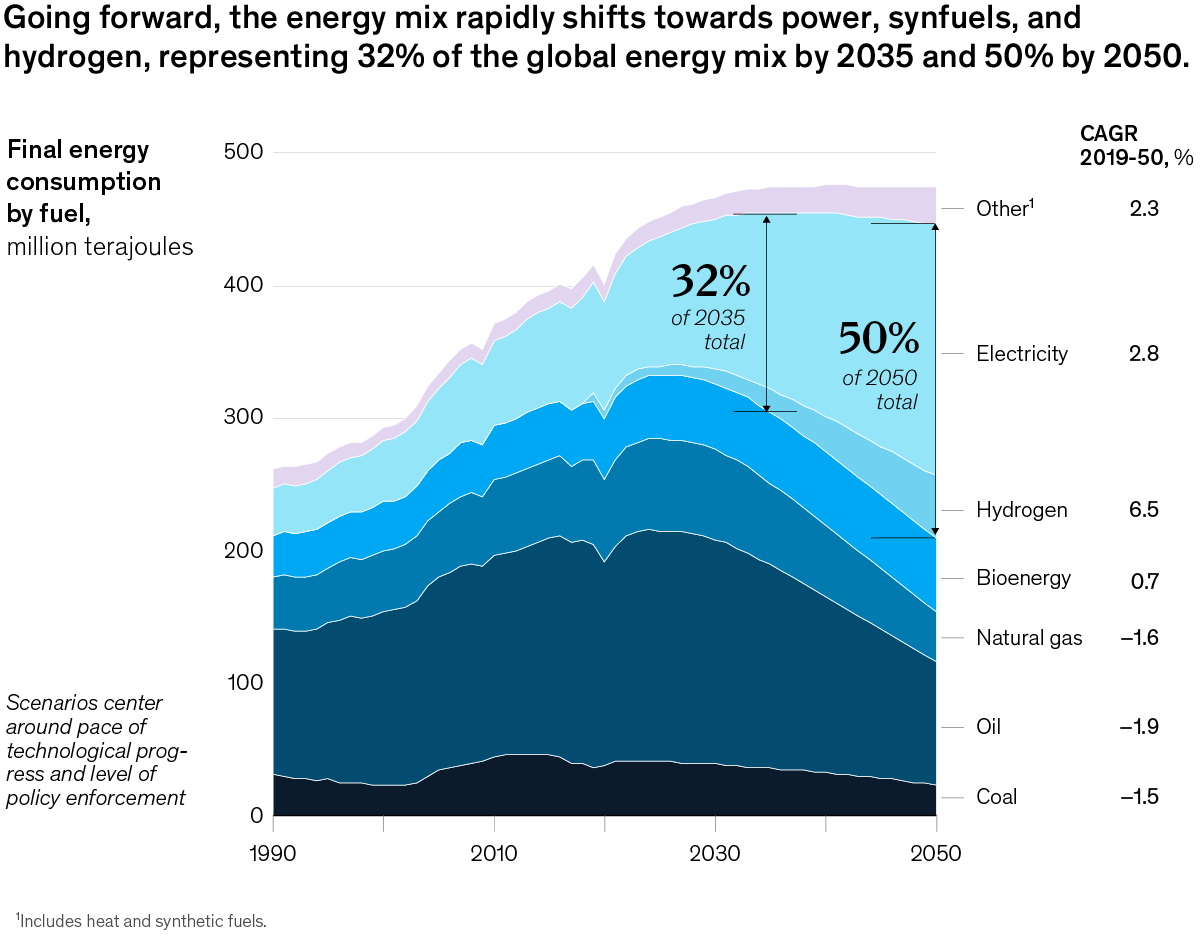
See today’s chart 
Also New 

Navigating inflation in retail: Six actions for retailers Retailers are facing the possibility of persistent inflation—but they can meet that challenge in ways that streamline operations, retain customers, and drive profitable growth. Weather the storm 


Failure is not an option: Increasing the chances of achieving net zero Countries and companies globally are taking action to pursue net-zero emissions, but their plans could easily be derailed by myriad factors. Here are some considerations for helping to keep them on track. Monitor and adapt 


How to be a great 21st-century CEO What do CEOs do? Why do they do it that way? And what matters most? Learn to lead 


Follow our thinking 



Share these insights Did you enjoy this newsletter? Forward it to colleagues and friends so they can subscribe too.
Was this issue forwarded to you? Sign up for it and sample our 40+ other free email subscriptions here.This email contains information about McKinsey’s research, insights, services, or events. By opening our emails or clicking on links, you agree to our use of cookies and web tracking technology. For more information on how we use and protect your information, please review our privacy policy. You received this email because you subscribed to the Daily Read newsletter. Manage subscriptions | Unsubscribe Copyright © 2022 | McKinsey & Company, 3 World Trade Center, 175 Greenwich Street, New York, NY 10007
by "McKinsey Daily Read" <publishing@email.mckinsey.com> - 06:34 - 6 Jun 2022 -
Is your leadership training effective? A leader’s guide
Leading Off
Training day .
Share this email 



ESSENTIALS FOR LEADERS AND THOSE THEY LEAD 
Leadership development programs are a thriving business. Prior to the COVID-19 outbreak, the market was estimated to be worth more than $50 billion, and it is one of the few learning and development markets that continues to grow despite other economic trends. Yet over the decades, organizations have been consistently dissatisfied with the results of their leadership training efforts. For example, only 11 percent of executives in a McKinsey study believe that their leadership development interventions achieve and sustain the desired results. Strong leadership is more critical than ever as the world grapples with crisis and uncertainty. This week, let’s explore what’s missing in leadership training programs and how to adjust them to the needs of a new generation of leaders. AN IDEA 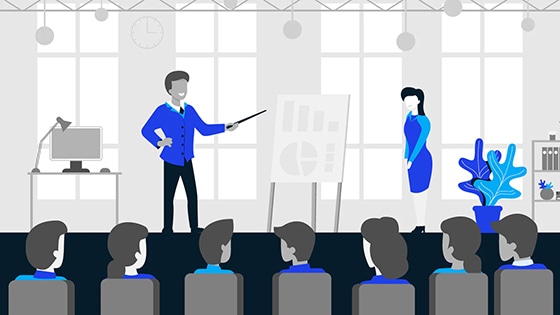
Be rigorous and specific in your training efforts A one-size-fits-all program that develops generic leadership competencies is unlikely to suit the unique objectives of your organization. One company held a workshop to help leaders foster a “more global mindset”—with little discussion as to why a global mindset was essential to the company strategy to begin with or what participants should do differently in their daily work. A more effective approach is to rigorously connect your organization’s objectives with the critical leadership behaviors needed to achieve them. For example, an oil and gas company might emphasize operational discipline and safety, whereas a private-equity investment firm might value swift decision making and action. Clearly identify the gap that the leadership development program needs to fill, and focus on a few priority behaviors rather than making sweeping changes all at once. 
A BIG NUMBER 20 That’s the number of fundamental leadership traits that correlate closely with organizational performance and should be at the center of any leadership development program. These characteristics include simple but effective tactics such as facilitating group collaboration, giving praise, and being supportive; in turn, they fall under the four broader leadership qualities of insight, integrity, courage, and agility. Collectively, these four attributes have the power to drive the kind of sustained innovation that can take organizations in bold new directions. 

A QUOTE “Corporations are victims of the great training robbery.” With that provocative statement, the authors of this Harvard Business Review article launch into a critique of why most leadership development programs don’t deliver a good return on investment. A key reason is context: even highly motivated participants fail to apply what they have learned because their units are still entrenched in the old ways of doing things. Individual development, therefore, needs to come after organizational redesign. And since each region, function, and operating group has its own unique needs, senior leaders should consider a unit-by-unit change strategy that integrates individual education with organizational development objectives. Context is a critical element of successful leadership, and providing it involves equipping leaders with a small group of capabilities that will make a significant difference to performance. 
A SPOTLIGHT INTERVIEW 
“We need to prepare the leaders of the future—people who are going to return this country to a better place,” says former presidential adviser David Gergen. In this McKinsey Author Talks interview, Gergen calls for a younger generation of leaders to tackle urgent issues such as economic challenges, racial inequities, and climate problems. He advises that doing so will require a hard head and a soft heart: “Both things are important. You do need someone who’s tough. . . . [But] an important element of leadership today is to understand the little guy, to understand the women who’ve been discriminated against, to understand the people of color who’ve been discriminated against, and to join them in trying to make their lives better.” 
NEW DEAL 
Many of the favored leadership qualities of yesteryear—assertiveness, charm, charisma, risk taking—aren’t necessarily the ones that organizations choose to develop today. Increasingly, companies are looking for leaders who demonstrate humility, empathy, and the ability to look beyond their own self-interest. People-focused traits such as integrity, ethics, connectedness, and awareness of social-justice issues are increasing in importance, and more organizations offer specialized programs to develop leadership character. Lead by developing good leaders. — Edited by Rama Ramaswami, a senior editor in McKinsey’s Stamford, Connecticut, office 

Follow our thinking 



Share these insights Did you enjoy this newsletter? Forward it to colleagues and friends so they can subscribe too.
Was this issue forwarded to you? Sign up for it and sample our 40+ other free email subscriptions here.This email contains information about McKinsey’s research, insights, services, or events. By opening our emails or clicking on links, you agree to our use of cookies and web tracking technology. For more information on how we use and protect your information, please review our privacy policy. You received this email because you subscribed to the Leading Off newsletter. Manage subscriptions | Unsubscribe Copyright © 2022 | McKinsey & Company, 3 World Trade Center, 175 Greenwich Street, New York, NY 10007
by "McKinsey Leading Off" <publishing@email.mckinsey.com> - 02:25 - 6 Jun 2022 -
European consumers’ cost of living rises as optimism drops
McKinsey&Company
Stretching the household euro (and pound) .

The adaptable European consumer In the news • Déjà vu. European consumers may feel like they’re back in 1999, when consumer price growth soared upon the creation of the single currency. Inflation in the eurozone has climbed for ten months straight, with the index of consumer pricing hitting 7.4% in April 2022; economists expect it to rise even more. Since the war in Ukraine began, the prices of energy and raw materials have soared, further driving up inflation. At the same time, the easing of COVID-19-related restrictions has intensified demand. [FT] • Not-so-stiff upper lip. Facing the biggest cost-of-living uptick on record, British consumers are feeling more pessimistic than ever, according to a market research company that has been tracking sentiment since 1974. UK consumers are more downbeat than their peers in France and Germany and more negative than they were during periods of high inflation and unemployment in the 1980s and 1990s. The future is murky, with inflation in the UK predicted to exceed 10% this year. [Reuters] 
Rising prices, followed by the invasion of Ukraine, have eclipsed COVID-19 as the number-one worry among European consumers. 
On McKinsey.com • Spending more and saving less. McKinsey’s latest European Consumer Pulse Survey tapped into the sentiment of 1,000 respondents in France, Germany, Italy, Spain, and the UK. In each country, more than half of consumers said their economy was in a bad state. Around 60% of respondents said their households were spending more on energy and utilities, transport and gasoline, and food and essentials. Higher prices also cut into savings, with five of ten respondents saving less. • An uptick in trading down. European consumers are responding to new stressors with new behaviors. Many are trading down, with 37% trying a private-label brand, 29% switching to a different brand, and 24% shopping at a different store. Consumers are clearly switching to cheaper options, particularly for household products, snacks and confectionary, and frozen foods. See how European shoppers are confronting inflation, along with how consumer behaviors are changing. — Edited by Katy McLaughlin Comprehend consumers 
Was this forwarded to you? Sign up here. Or send us feedback — we’d love to hear from you. 

Follow our thinking 


This email contains information about McKinsey’s research, insights, services, or events. By opening our emails or clicking on links, you agree to our use of cookies and web tracking technology. For more information on how we use and protect your information, please review our privacy policy. You received this email because you subscribed to the On Point newsletter. Manage subscriptions | Unsubscribe Copyright © 2022 | McKinsey & Company, 3 World Trade Center, 175 Greenwich Street, New York, NY 10007
by "McKinsey On Point" <publishing@email.mckinsey.com> - 10:05 - 5 Jun 2022 -
Join us for 🎙Webinar: Improving Life-Work Balance for Your Remote Workforce
Join us for 🎙Webinar: Improving Life-Work Balance for Your Remote Workforce
Don't miss out!Hi MD,
There is still time to register for our next webinar. Learn from four experts from Remote as they share practical strategies for managers and people leaders at every level to protect remote team members against burnout.
🎙 WEBINAR: Improving Life-Work Balance for Your Remote WorkforceDate: 7th June
Times: 3.30pm UTC | 4.30pm BST | 5.30pm CET | 11.30am EST
What will you learn?
- How to create team structures that facilitate healthy working hours
- Which benefits and programs can improve life-work balance
- How to build psychological safety within remote teams
- How to identify and prevent burnout before it happens
- Where asynchronous workflows can help
Hire, onboard, and pay your international team in minutes and stay compliant.
You received this email because you are subscribed to News & Offers from Remote Technology, Inc.
Update your email preferences to choose the types of emails you receive.
Unsubscribe from all future emailsRemote Technology, Inc.
Copyright © 2022 Remote Technology, Inc. All rights reserved.
18 Bartol St. #1163 San Francisco California
by "Remote" <hello@remote-comms.com> - 08:17 - 5 Jun 2022 -
The week in charts
the Daily read
The path to net zero, low-emission cars, and more .
Share this email 



ALL THE WEEK’S DATA THAT'S FIT TO VISUALIZE 
Our Charting the path to the next normal series offers a daily chart that helps explain a changing world—as we strive for sustainable, inclusive growth. In case you missed them, this week’s graphics explored the path to net-zero emissions in the US, low-emission vehicles, organizations with cross-functional design integration, and online grocery shopping. FEATURED CHART America’s net-zero shift 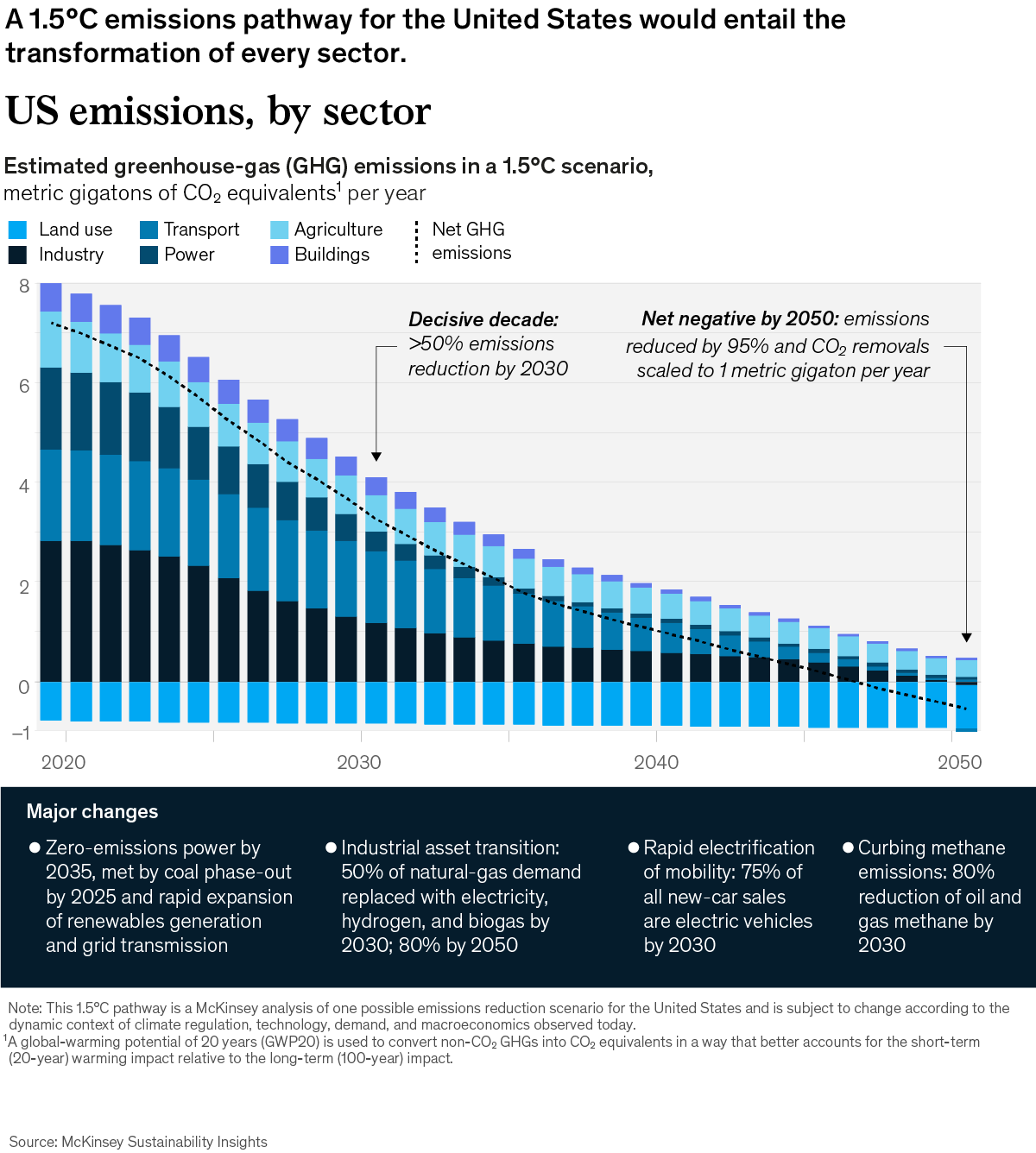
See more 



This week’s other select charts A new high for low-emissions cars Spread the creativity Convenient but costly 

Follow our thinking 



Share these insights Did you enjoy this newsletter? Forward it to colleagues and friends so they can subscribe too.
Was this issue forwarded to you? Sign up for it and sample our 40+ other free email subscriptions here.This email contains information about McKinsey’s research, insights, services, or events. By opening our emails or clicking on links, you agree to our use of cookies and web tracking technology. For more information on how we use and protect your information, please review our privacy policy. You received this email because you subscribed to The Week in Charts newsletter. Manage subscriptions | Unsubscribe Copyright © 2022 | McKinsey & Company, 3 World Trade Center, 175 Greenwich Street, New York, NY 10007
by "McKinsey Week in Charts" <publishing@email.mckinsey.com> - 03:04 - 4 Jun 2022 -
The war in Ukraine is changing the world
McKinsey&Company
Plus, critical trends and risks in the global economy .
Share this email 



Monthly Highlights, June 2022 As the war in Ukraine persists, disruptions on a range of fronts are gathering force, and could reshape industries and economies. This month, our featured stories dive into the potential strength and direction of these shifts and their effects on lives and livelihoods, as well as the war’s possible ramifications on the key requirements for a more orderly net-zero transition. Other highlights in this month’s issue include the following topics: - the latest critical trends and risks in the global economy
- how US consumer sentiment and behavior have evolved since the pandemic began
- what makes a digital transformation successful
- the future of workplace real estate
Editor’s choice 

War in Ukraine: Twelve disruptions changing the world The war is devastating lives and roiling markets. Here we track the disruptions that seem likely to shape lives and livelihoods, beyond the immediate crisis. Navigate the crisis 





The net-zero transition in the wake of the war in Ukraine: A detour, a derailment, or a different path? The invasion of Ukraine will, at least initially, complicate the transition path to a net-zero economy, but this tragic development could still prove to be a turning point in accelerating progress in the medium run. Understand global events 




THIS MONTH’S HIGHLIGHTS 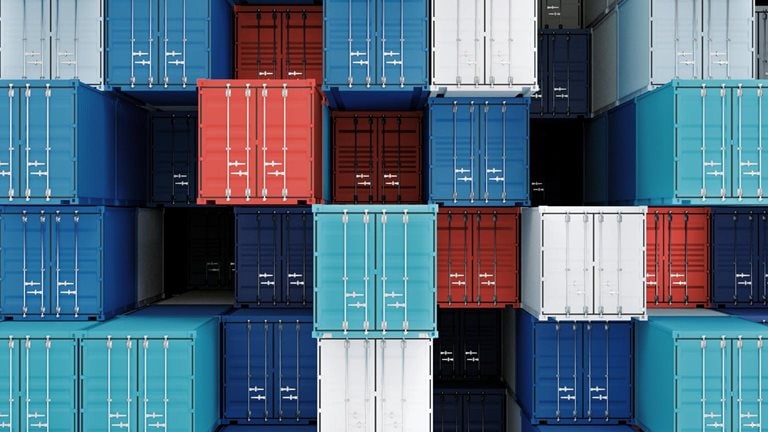
Global Economics Intelligence executive summary, April 2022 Amidst high inflation and the continuing war in Ukraine, strong demand persists; forecasting institutions trim growth estimates. Understand worldwide trends 

How US consumers are feeling, shopping, and spending—and what it means for companies The latest Consumer Pulse survey shows that, across America, people have simultaneously embraced new behaviors and reverted to old ones. What will they do next? Understand the trends 

Digital transformation on the CEO agenda Successful digital transformations may not be as elusive as you think. The best CEOs know up front what success looks like—and what stands in their way. Get better, faster 
Workplace real estate in the COVID-19 era: From cost center to competitive advantage Companies today should build workplaces that help them realize their strategies. Here’s why and how. 3 steps for transformation 

State of Fashion Technology Report 2022 As technological innovation accelerates, fashion companies have an opportunity to serve customers better while also creating a more efficient, responsive, and responsible business. Keep up 

Can the automotive industry scale fast enough? The rapidly increasing uptake of electric vehicles could transform the automotive ecosystem and promote even greater innovations. For that to happen, two imperatives need attention now. Speed up 
ALSO NEW Marketing in the metaverse: An opportunity for innovation and experimentation Securing Europe’s future beyond energy: Addressing its corporate and technology gap Reflections on 20 years of McKinsey on Finance—and three challenges ahead The childcare conundrum: How can companies ease working parents’ return to the office? Reimagining the future of financial-services headquarters Bias Busters: When the crowd isn’t necessarily wise Author Talks: Tomorrow’s capitalist is socially conscious The role of space in driving sustainability, security, and development on Earth CFO perspectives on leading agile change Around the world, nurses say meaningful work keeps them going Forward Thinking on trade, vaccines, and sustainable and inclusive growth with WTO Director-General Ngozi Okonjo-Iweala Quantum computing just might save the planet 
SPECIAL FEATURES 
The war in Ukraine The Russian invasion of Ukraine has caused the greatest humanitarian crisis in generations. Here’s how leaders can respond. Navigate through uncertainty 

The graduate’s guide Recent insights and interviews to help you hit the ground running at your new job or internship during a period of continuing—and profound—change. See the collection 

Decarbonizing the world’s industries This collection draws together articles and reports that lay out a pathway to net zero for nine emissions-intensive industries. Explore the guide 
The McKinsey Crossword Sharpen your problem-solving skills the McKinsey way, with our weekly crossword. Play now 

McKinsey Classics Simple communication tweaks based on behavioral research can nudge employees into top form. Read our 2016 classic “How small shifts in leadership can transform your team dynamic.” Rewind 

Mind the Gap Read a sample of Mind the Gap, and sign up for it or any of our 40+ free email subscriptions. Subscribe — Curated by Eleni Kostopoulos, a digital publishing manager in McKinsey’s New York office 

Follow our thinking 


McKinsey Insights - Get our latest
thinking on your iPhone, iPad, or Android


Share these insights Did you enjoy this newsletter? Forward it to colleagues and friends so they can subscribe too.
Was this issue forwarded to you? Sign up for it and sample our 40+ other free email subscriptions here.This email contains information about McKinsey’s research, insights, services, or events. By opening our emails or clicking on links, you agree to our use of cookies and web tracking technology. For more information on how we use and protect your information, please review our privacy policy. You received this email because you are a registered member of our Monthly Highlights newsletter. Manage subscriptions | Unsubscribe Copyright © 2022 | McKinsey & Company, 3 World Trade Center, 175 Greenwich Street, New York, NY 10007
by "McKinsey Highlights" <publishing@email.mckinsey.com> - 11:46 - 4 Jun 2022 -
Meet Uffizio at Seguridad Expo in Mexico at Booth No: 1248
Meet Uffizio at Seguridad Expo in Mexico at Booth No: 1248

 It's official. We’re flying over international waters to be a part of Latin America's most awaited Security Expo! We are happy to announce that Uffizio will be exhibiting at Expo Seguridad Mexico this month, from 28th -30th June.
It's official. We’re flying over international waters to be a part of Latin America's most awaited Security Expo! We are happy to announce that Uffizio will be exhibiting at Expo Seguridad Mexico this month, from 28th -30th June.
We’ll be talking about our advanced fleet management system, Trakzee. We will also demonstrate how it can help businesses increase profits and reveal some of our most exclusive features.
Our fleet management products have the reputation of maintaining international standards. Today, Trakzee is deployed in over 65+ countries and now it's time for Mexico! Visit us at Booth - 1248 and get a chance to see our platform live and in action!Schedule a meeting now! 




Want to change how you receive these emails?
You can update your preferences or unsubscribe from this list.
by "Uffizio Technologies Pvt Ltd" <official@uffizio.in> - 06:29 - 4 Jun 2022




.png?width=1200&upscale=true&name=Group%201%20(6).png)




